What Is GPT-4?
GPT-4 is a powerful large language model (LLM) from OpenAI that can help with a range of tasks, from writing emails to generating code.
GPT-4 is a major upgrade from previous generative AI models from OpenAI.
Which you can see in how it handles complex and nuanced prompts. By the it can adapt to specific tones, emotions, and genres. It can also generate code, process images, and interpret 26 languages.
While GPT-4 appears to be more accurate than its predecessors, it still invents facts—or hallucinates—and should not be used without fact-checking, particularly for tasks where accuracy is important.
GPT-4 Release Date
GPT-4 was released by OpenAI on March 14, 2023, to ChatGPT Plus subscribers and Bing search engine users. API access was also offered via a waitlist.
In May 2023, OpenAI released its mobile app for ChatGPT Plus subscribers.
What Are the New Features in GPT-4?
GPT-4 is a significant advance on GPT-3 and GPT-3.5. But how exactly is it better than these earlier models?
GPT-4 Is Multimodal
Unlike earlier models, GPT-4 has the ability to interpret images. This means you can use it to generate text from visual prompts like photographs and diagrams.
This capability is only available using the API. It’s not currently available for ChatGPT Plus subscribers using OpenAI’s apps.
Some common use cases for GPT-4’s multimodal feature include:
- Writing captions: Upload your social media image and ask GPT-4 to write a caption according to your tone of voice (for example, witty, professional, or friendly).
- Drafting alt text: Upload an image you are using in a blog post and ask GPT-4 to provide you with appropriately descriptive alt text.
- Generating code: Upload a diagram or wireframe of a webpage, and ask GPT-4 to give you the relevant HTML and CSS.
One famous example of GPT-4’s multimodal feature comes from Greg Brockman, president and co-founder of OpenAI.
In his livestream demo, Brockman gives GPT-4 a photo of a rough sketch for a website. In response, GPT-4 produces the code necessary to build that website from scratch.
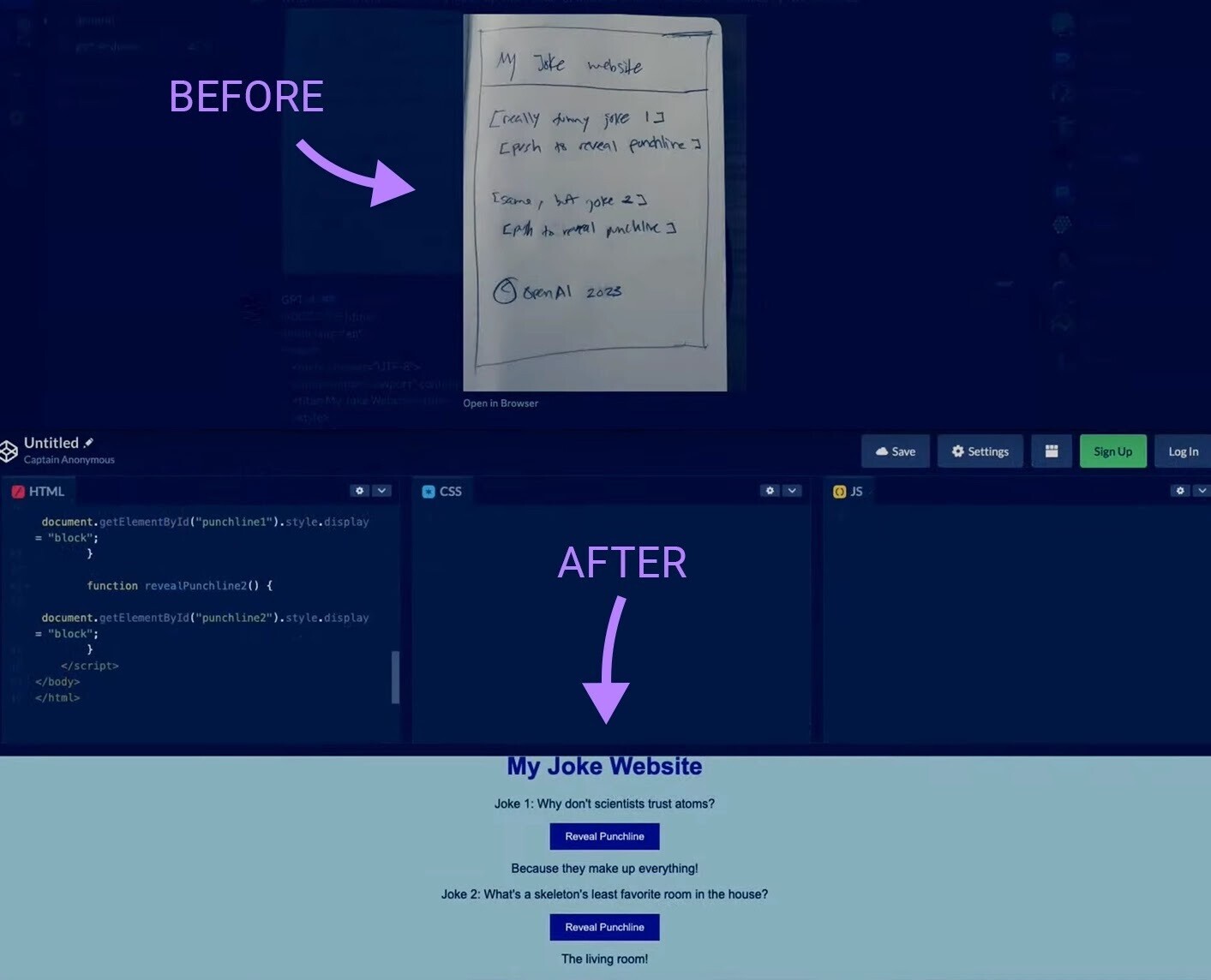
Note: GPT-4 does not generate images itself, though this capability is offered by another of OpenAI’s products, DALL·E 2.
GPT-4 Can Perform More Complex Tasks
GPT-4 is often better than previous models at handling nuance, which means it can perform more complex tasks.
For example, OpenAI tested GPT-4’s performance across a range of standardized exams. While GPT-4 still struggles in subjects like English Literature, it shot from the 10th to the 90th percentile in the Uniform Bar Exam, a standardized test for would-be lawyers in the United States.
It also made significant improvements in standardized tests for advanced high school subjects in the U.S. like Physics and Chemistry, as this chart from Open AI shows.
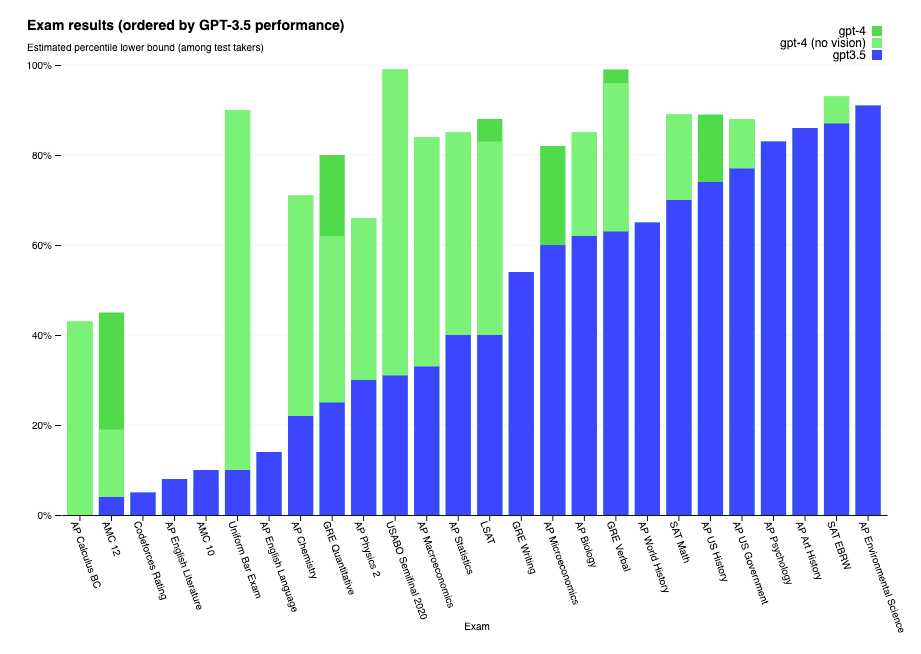
What does this mean for marketers and SEOs? Some common use cases for GPT-4’s ability to perform complex tasks include:
- Drafting blog posts: Provide a brief, and ask GPT-4 to write a first draft of a blog post. The more detailed and specific your brief, the more effective GPT-4 will be.
- Writing website copy: Describe your product or service, and ask GPT-4 to draft copy for your website or landing pages.
- Analyzing the competition: Give GPT-4 information about your market, and ask the AI to generate a list of the strengths and weaknesses of your main competitors.
Reminder: While GPT-4’s capabilities are often impressive, it can still provide inaccurate information. That’s why it’s critical to review all outputs for accuracy, completeness, consistency, and so on.
GPT-4 Is Multilingual
GPT-4 is multilingual, supporting 26 languages at launch.
The following chart from OpenAI shows the accuracy of GPT-4 across many different languages. While the AI model appears most effective with English uses, it is also a powerful tool for speakers of less commonly spoken languages, such as Welsh.
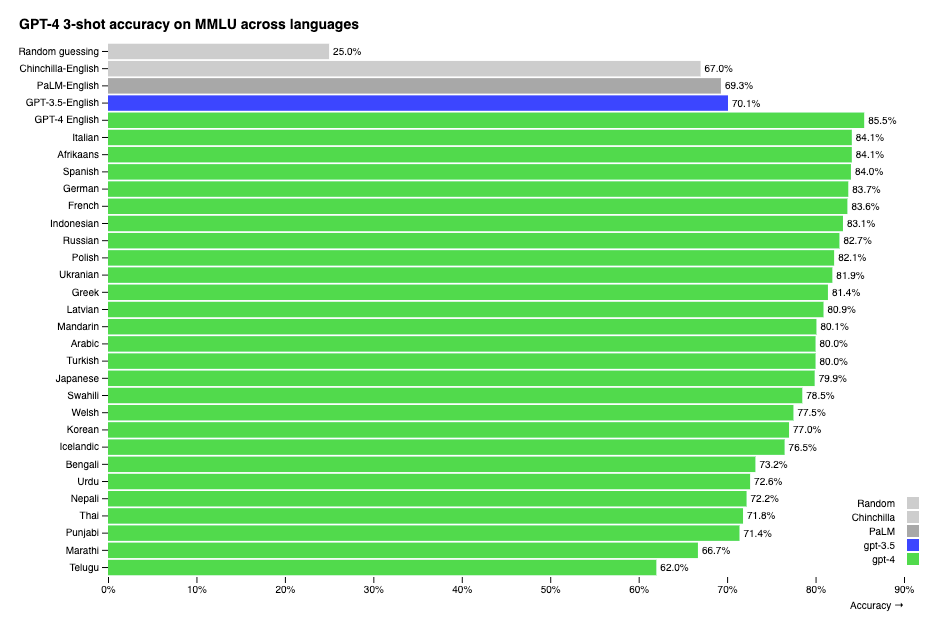
How Many Parameters Does GPT-4 Have?
GPT-4 has over 1 trillion parameters, according to reporting from U.S. news outlet Semafor. While OpenAI has not officially confirmed the number of parameters, early rumors that GPT-4 would have over 100 trillion parameters have been strongly denied by OpenAI CEO Sam Altman.
A parameter is a variable in an AI training model. The more parameters a model has, the more likely it is to give accurate responses across a range of topics.
This is why GPT-4 is able to do a notably broad range of tasks, including generate code, take a legal exam, and write original jokes.
For comparison, OpenAI’s first model, GPT-1, has 0.12 billion parameters. GPT-2 has 1.5 billion parameters, while GPT-3 has 175 billion.
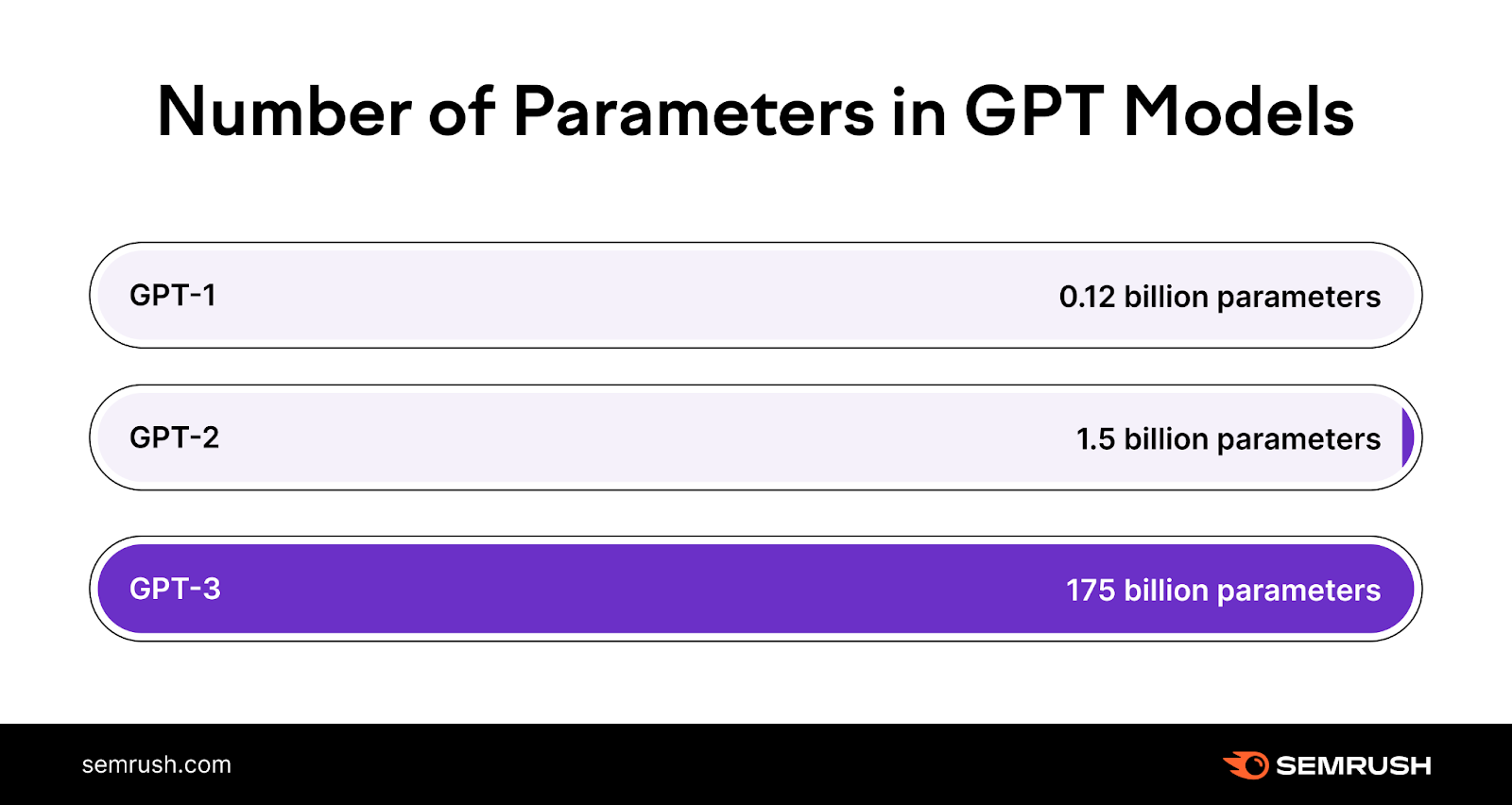
How to Use GPT-4
GPT-4 is embedded in an increasing number of applications, from payments company Stripe to language learning app Duolingo. It is also included in a range of AI copywriting tools.
To interact with GPT-4 outside of these apps, though, you can go straight to the source and use ChatGPT Plus.
ChatGPT Plus
The easiest way to access GPT-4 is to sign up for the paid version of ChatGPT, called ChatGPT Plus. Note that a ChatGPT Plus subscription costs $20 USD per month.
To get started, select the “ChatGPT” option on the OpenAI website.
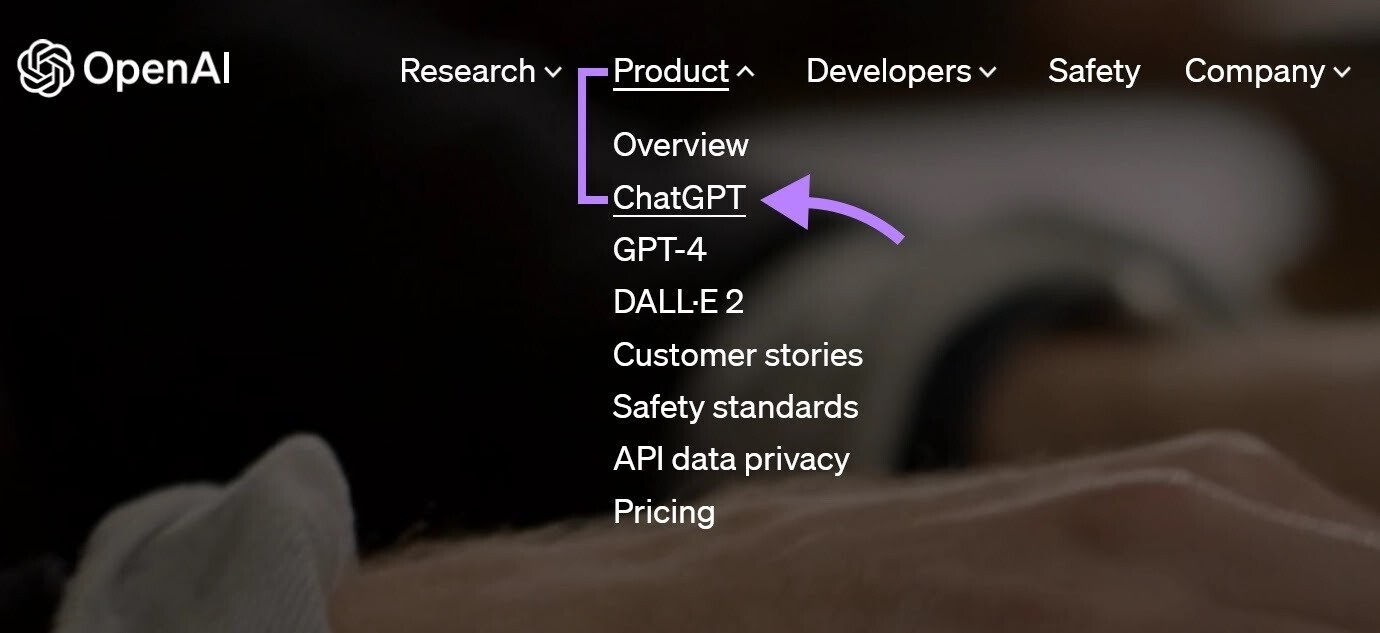
You then have the option to download the ChatGPT IOS app, or use it on the web. For now, let’s click on the “Try on web” option.
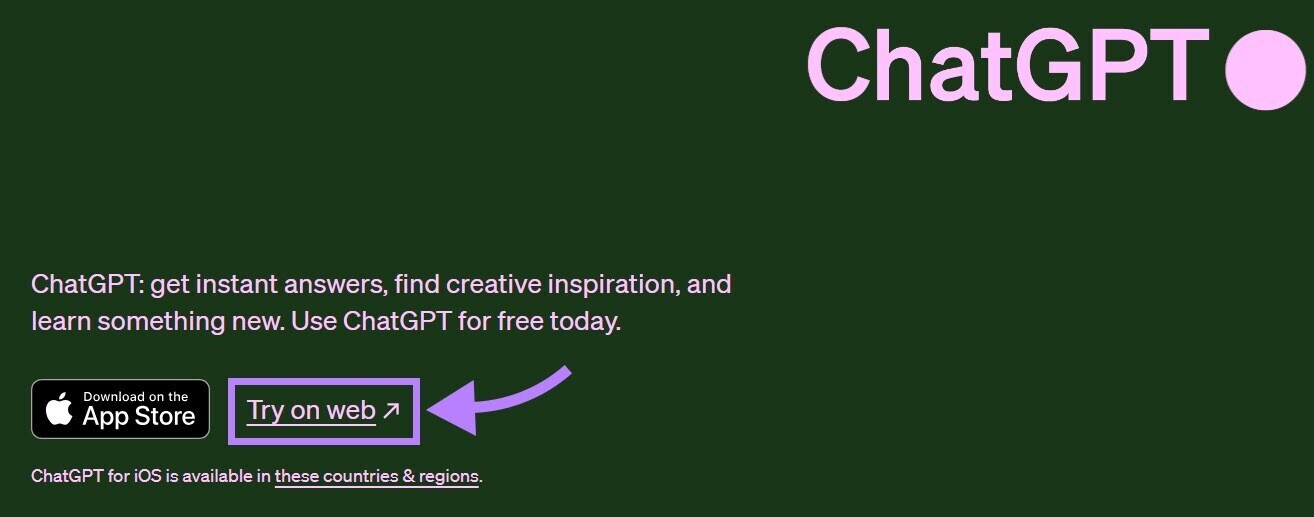
You’ll then be asked to sign up and create a new account. During the signup process, you’ll be asked to provide your date of birth, as well as a phone number.
Once you have created your OpenAI account, choose “ChatGPT” from the OpenAI apps provided. Note that you can also access GPT-4 using the OpenAI API.
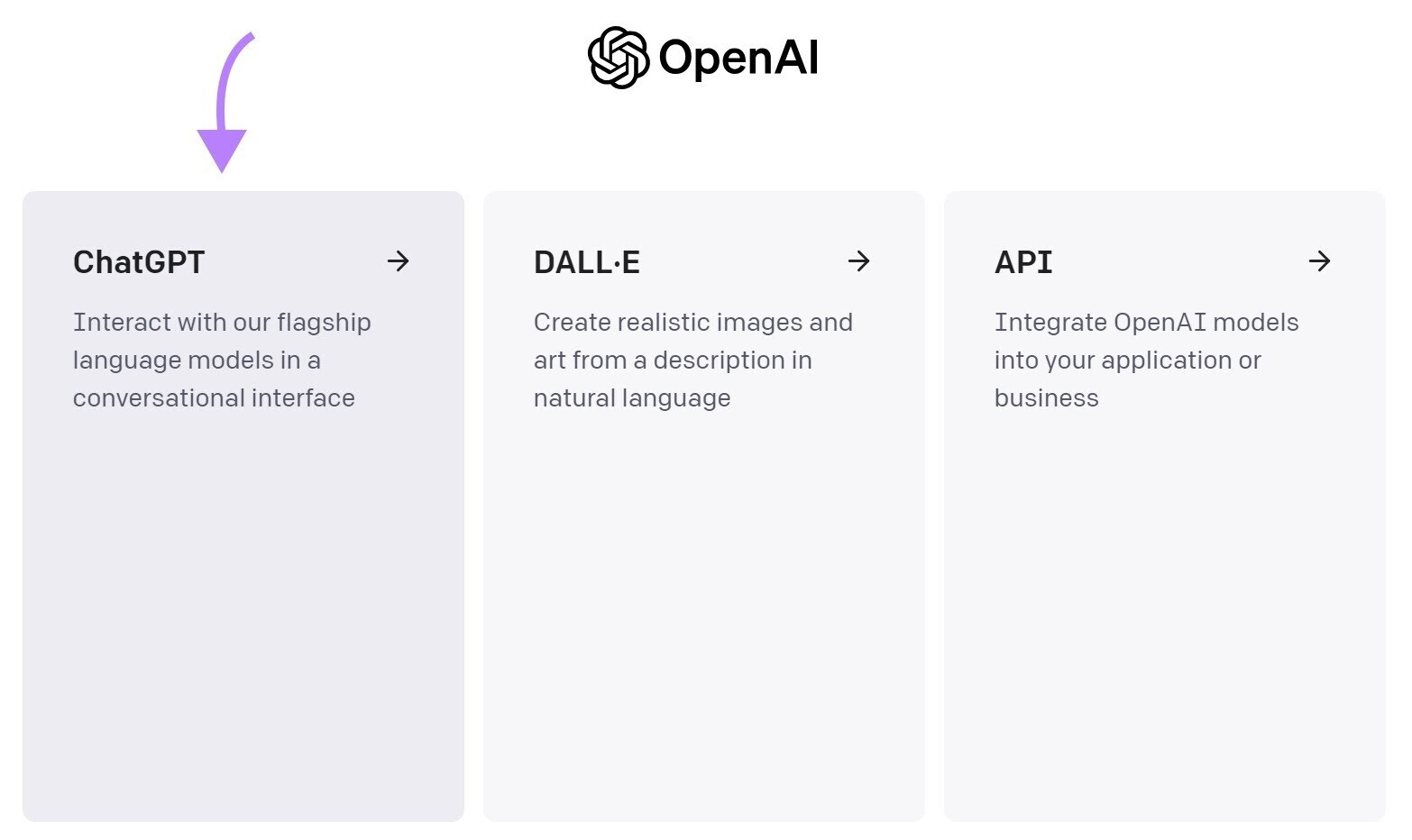
Once you are signed in to ChatGPT, click “Upgrade to Plus” in the bottom left corner.
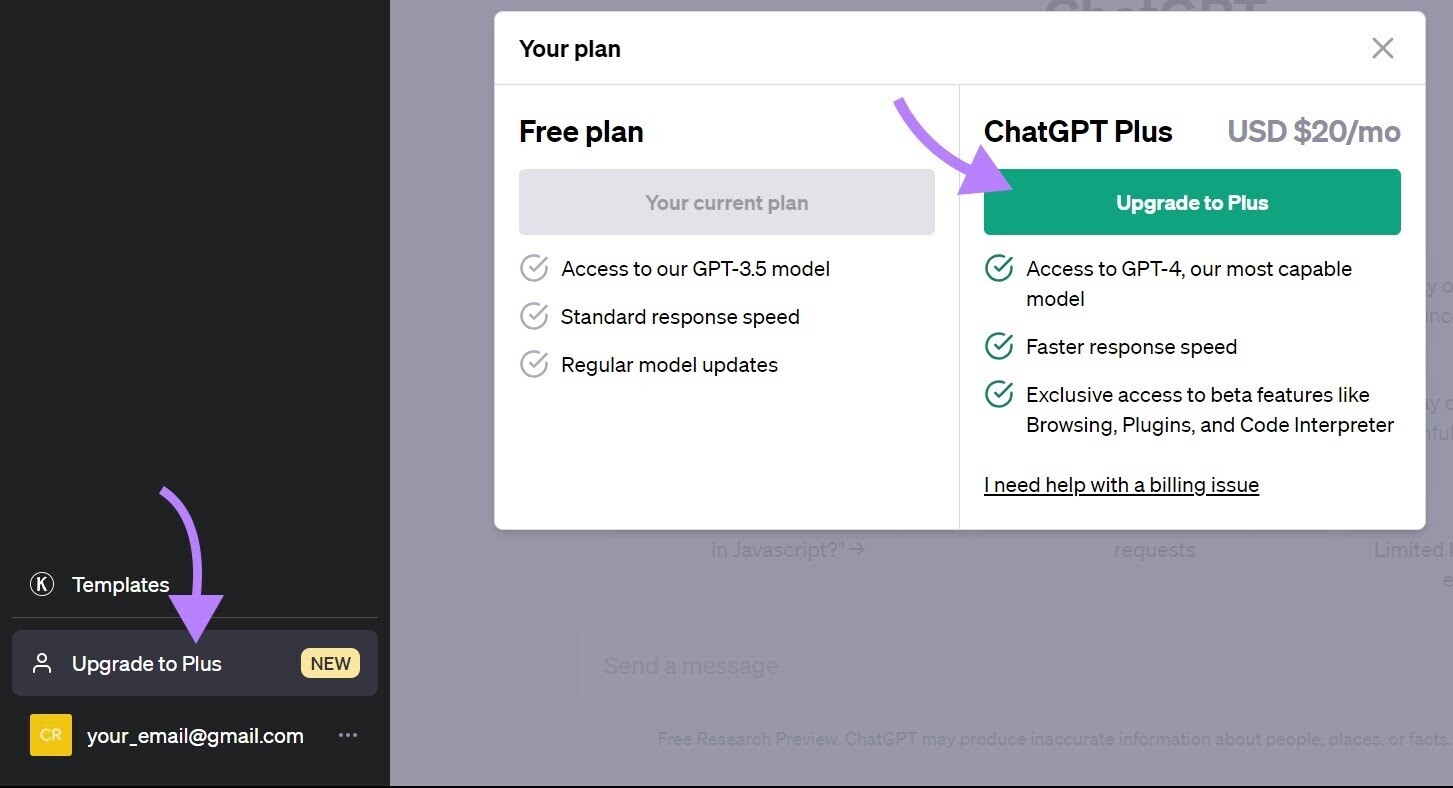
You will be asked to enter your credit card details. Once your payment has been processed, select “GPT 4” from the options at the top of your screen.
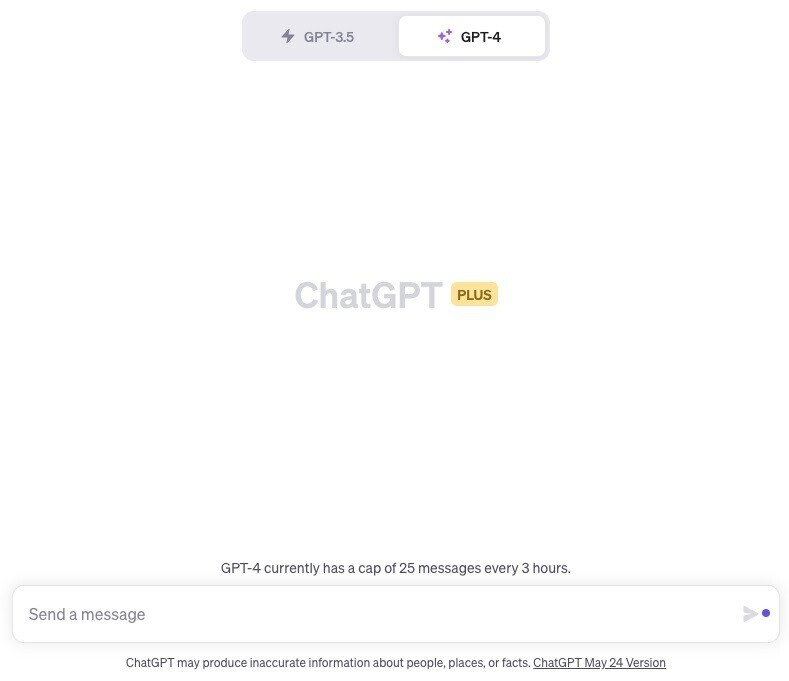
Extra reading: If you're looking for tips on the free version, read our other guide on how to use ChatGPT.
Bing Chat
GPT-4 is also available using Microsoft’s Bing search engine—though only if you’re using Microsoft’s Edge web browser. If you wish to use Bing Chat, you can download Edge here.
Once you have downloaded Edge, go to Bing.com and select “Chat” from the options at the top of your screen.
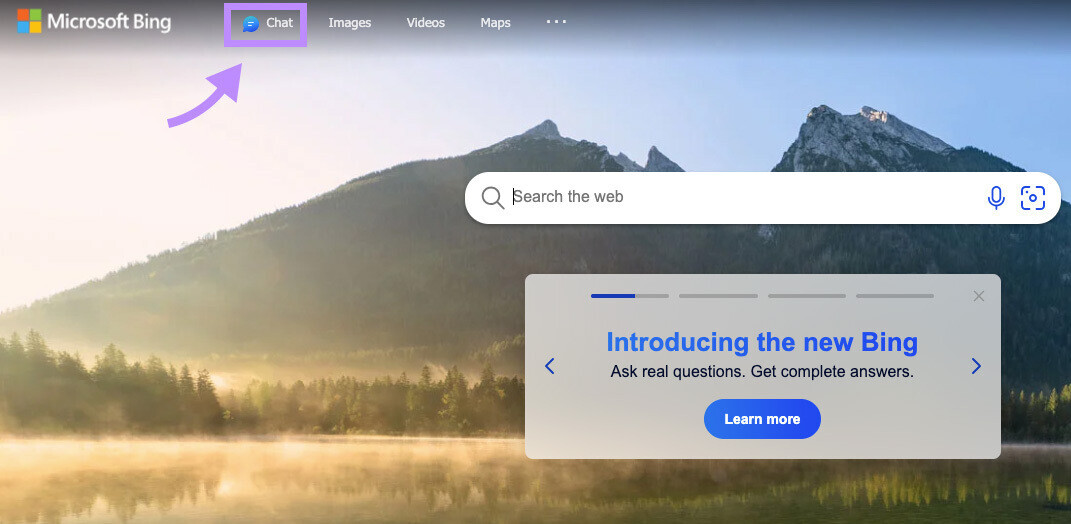
In the Chat screen, you can choose whether you want your answers to be more precise or more creative. You can also create an account to ask more questions and have longer conversations with GPT-4-powered Bing Chat.
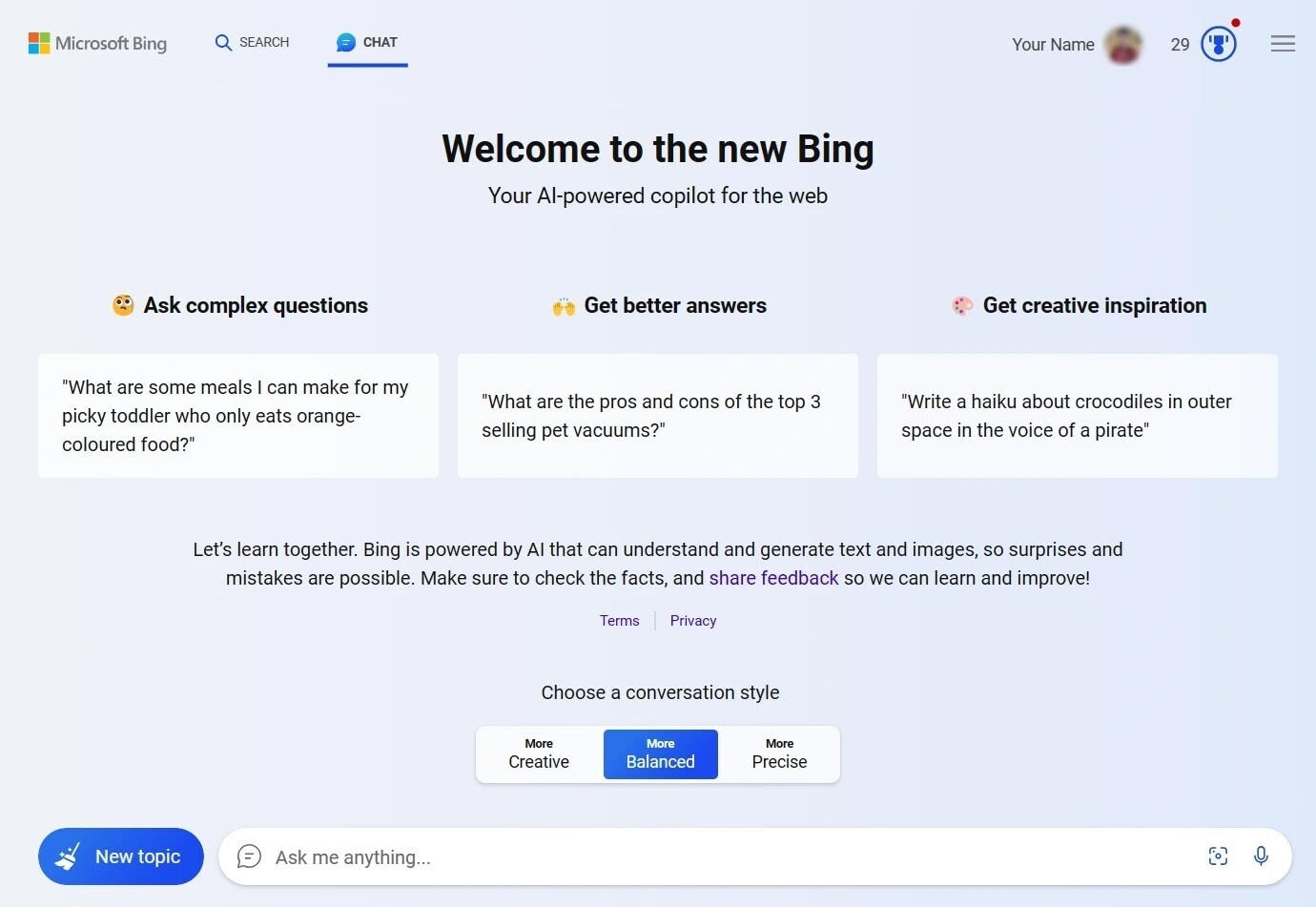
Alternatives to GPT-4
There are a range of other AI tools to use for generative AI. Let’s take a look at several key tools.
Semrush AI Writing Assistant
The Semrush AI Writing Assistant is a key alternative to GPT-4 for SEO content writing. This tool has been trained to assist marketers and SEO professionals to rank in search.
The tool can help you produce AI generated articles and optimize existing content for SEO.
To get started, select the “Semrush Writing Assistant” tool under the “Content Marketing” toolkit in the Semrush platform.
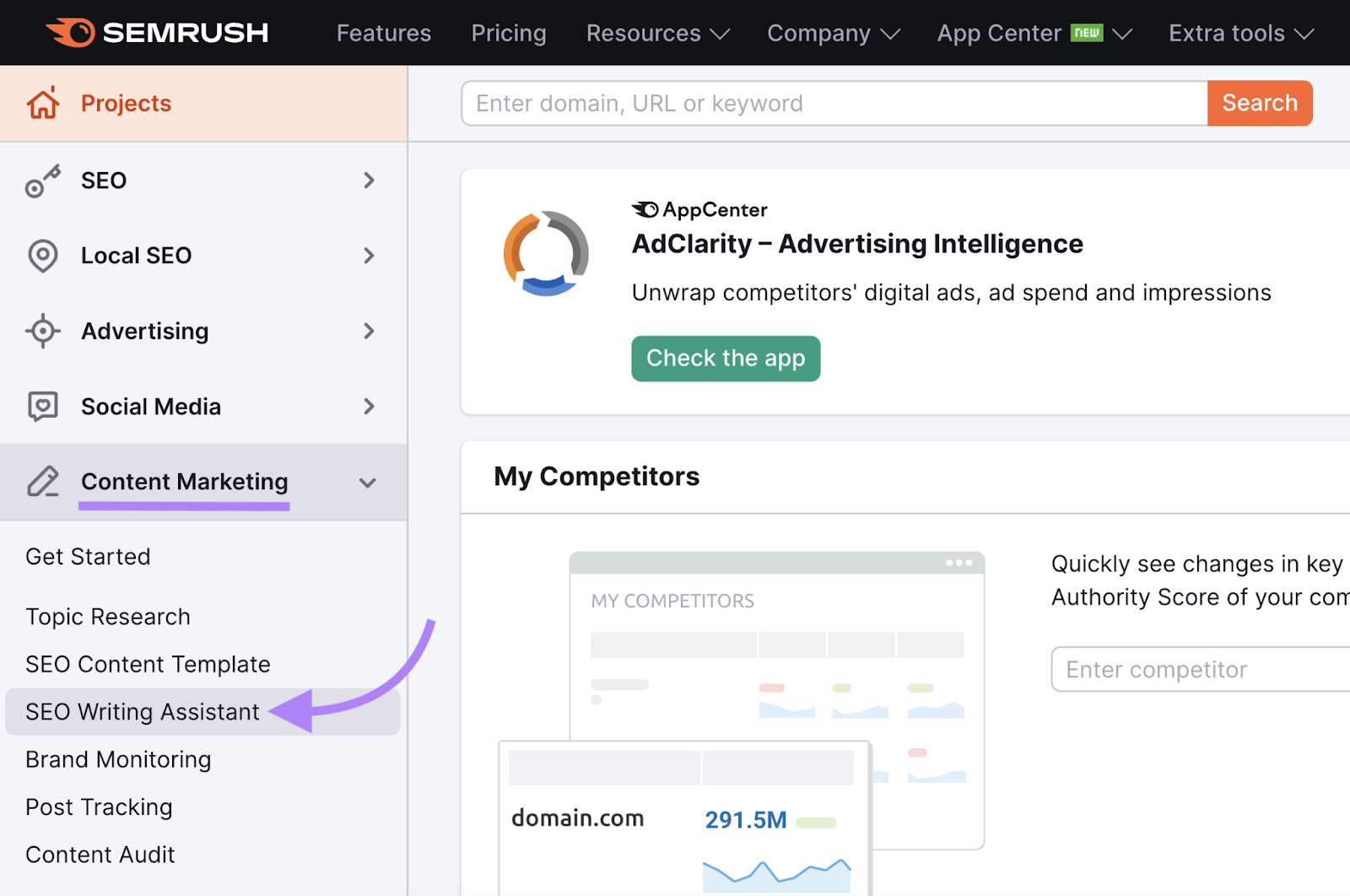
Select “Analyze my text” to start a new document.
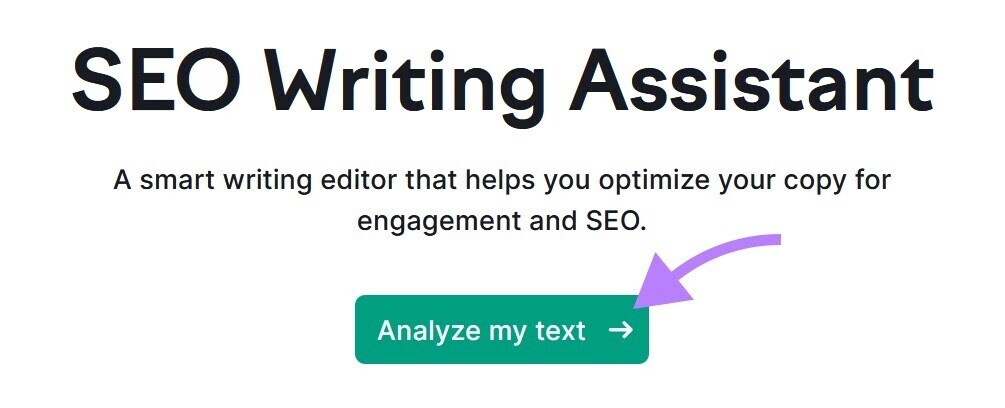
From your new document, you can either paste in an existing draft, enter keywords, or paste in a URL to an existing webpage. This will unlock SEO recommendations from Semrush.
In this example, we’ve chosen the keyword “ergonomic desk chairs.”
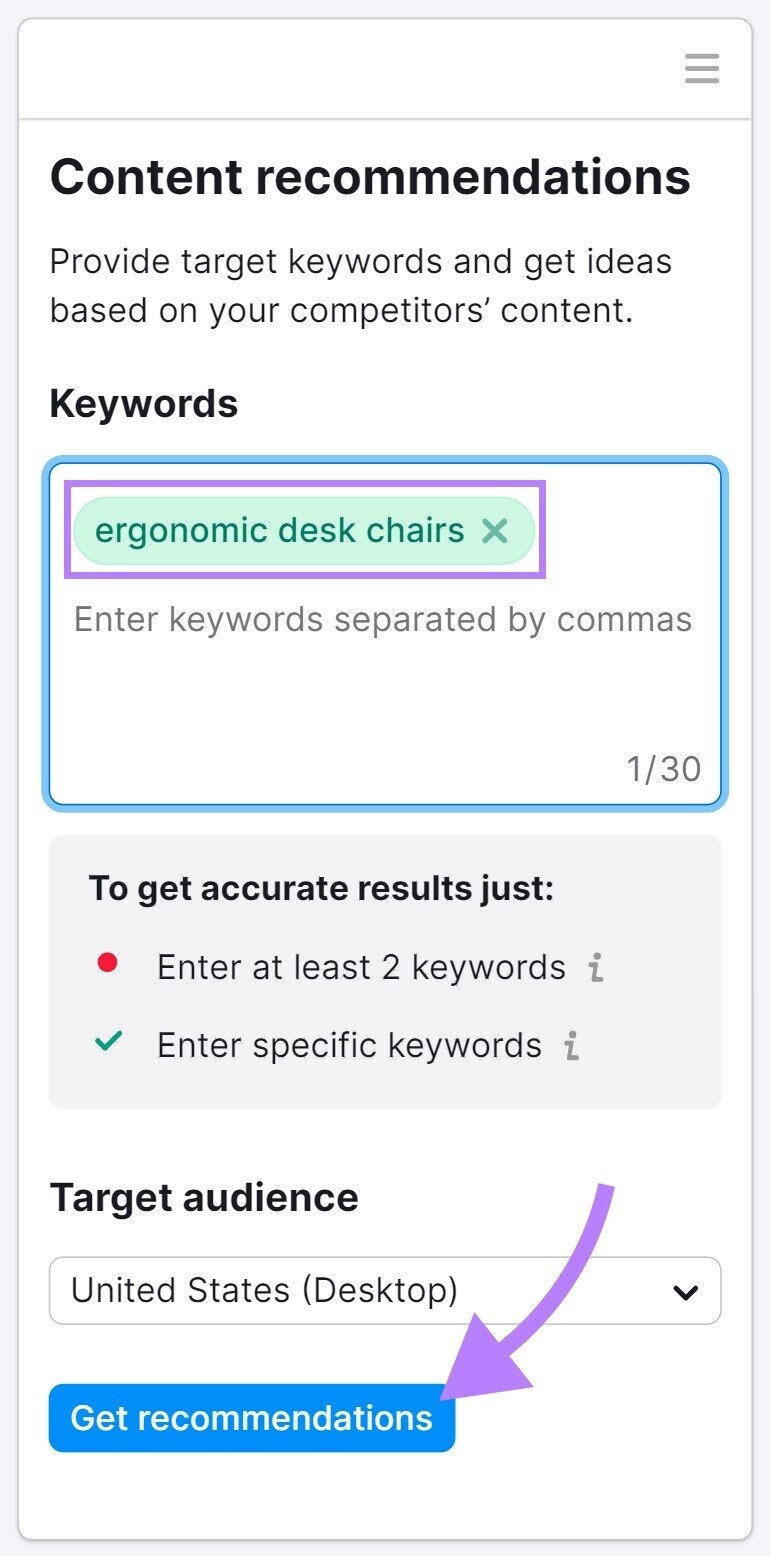
Once you have your SEO recommendations, you can use Semrush’s AI tools to draft, expand and rephrase your content.
To ask the Semrush AI Writing Assistant to compose new text, simply write a prompt in the text box and click “Compose.”
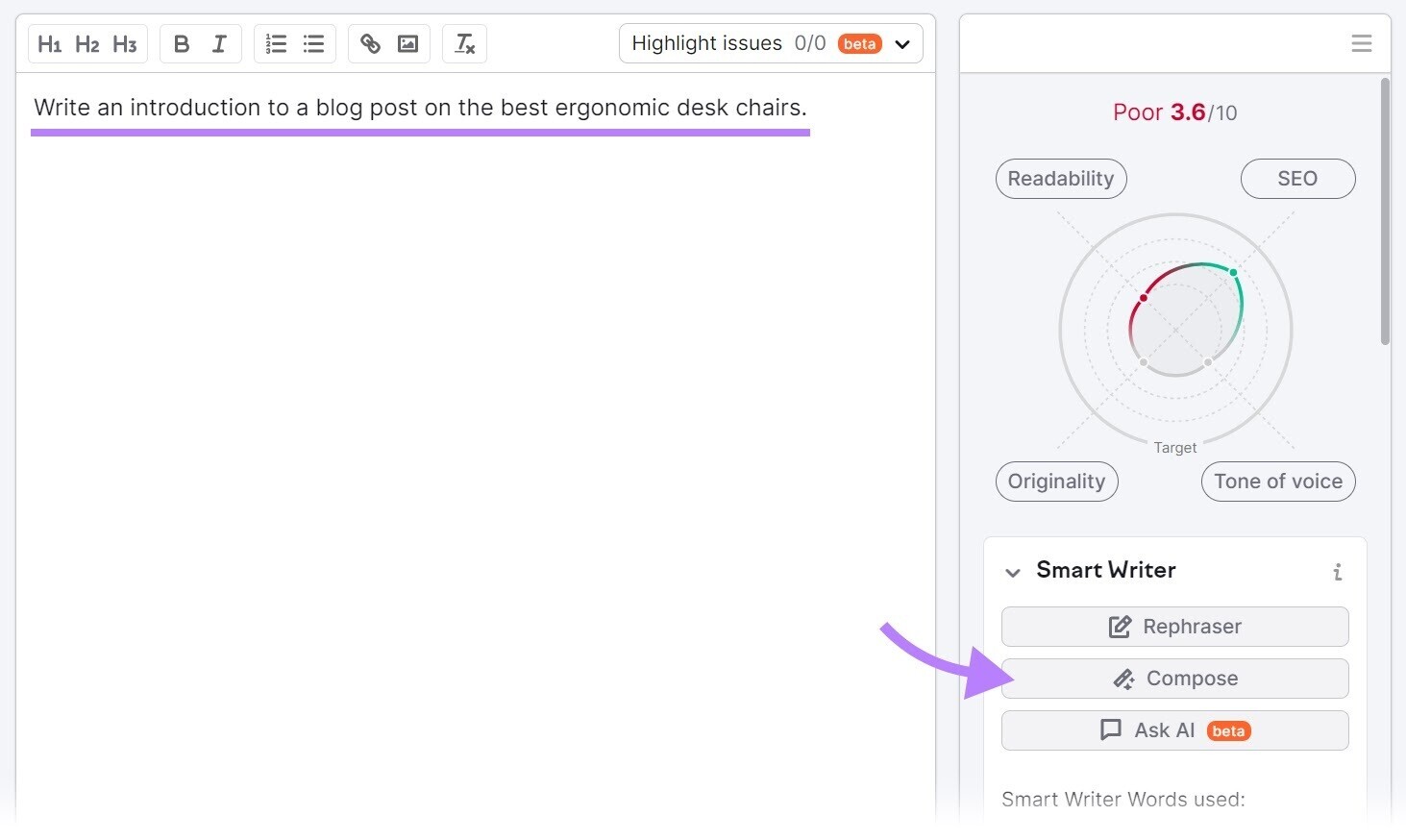
Once you have some words in your document, you can ask the Semrush AI Writing Assistant to perform tasks using the “Rephrase,” “Simplify,” “Expand,” or “Summarize” options.
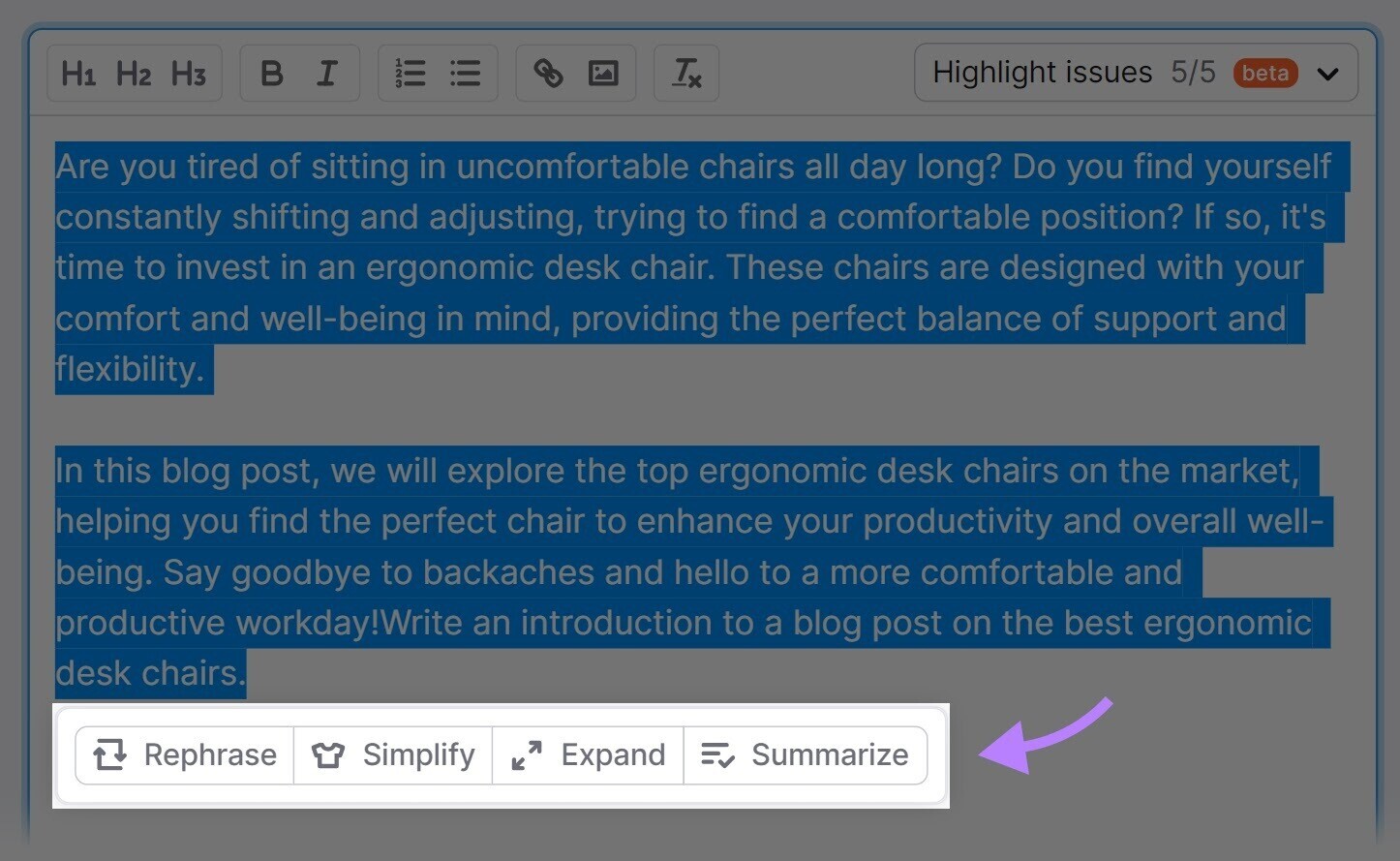
The Semrush AI Writing Assistant also comes with a ChatGPT-like Ask AI tool. Click “Ask AI,” enter your prompt, and the AI tool will generate a response directly in your document.
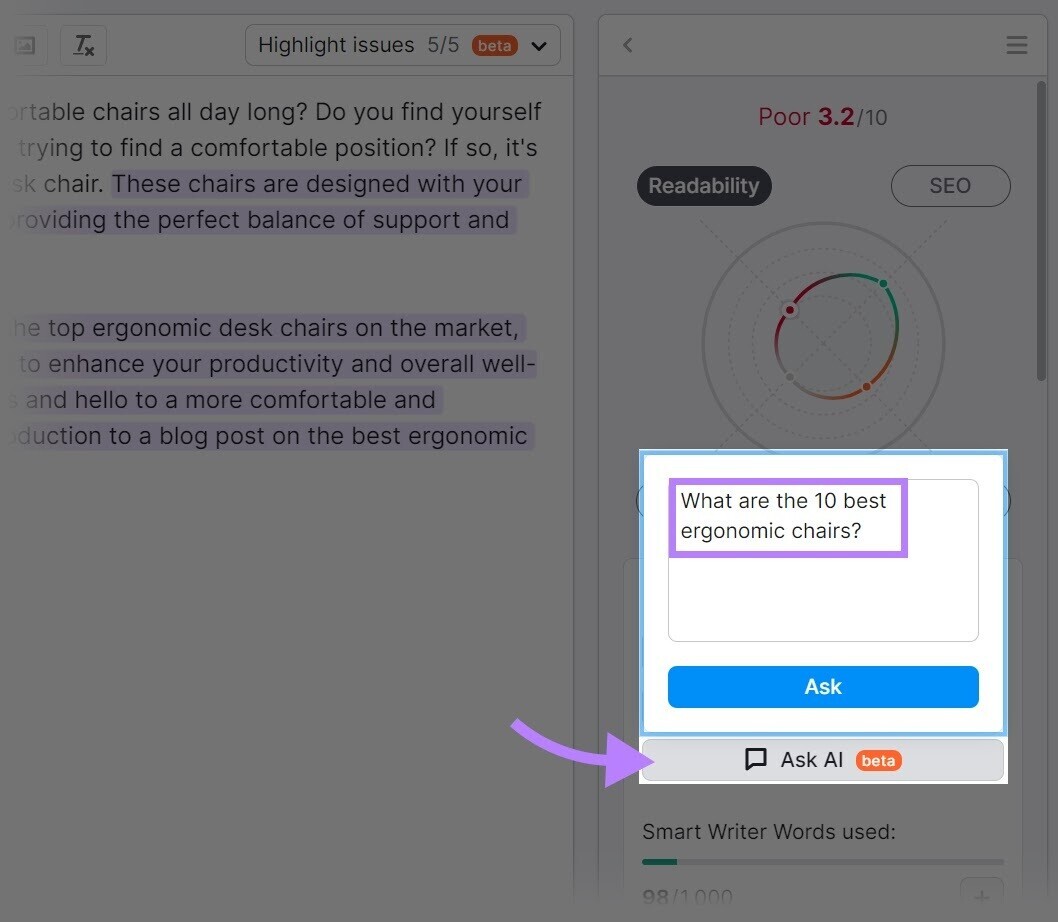
Once you have finished generating your content, you can then optimize it using Semrush AI Writing Assistant’s SEO tools.
Notion AI
Another alternative to GPT-4 is Notion AI, a generative AI tool built directly into workplace platform Notion.
To access Notion AI, simply start a new Notion document and select “Start writing with AI…”
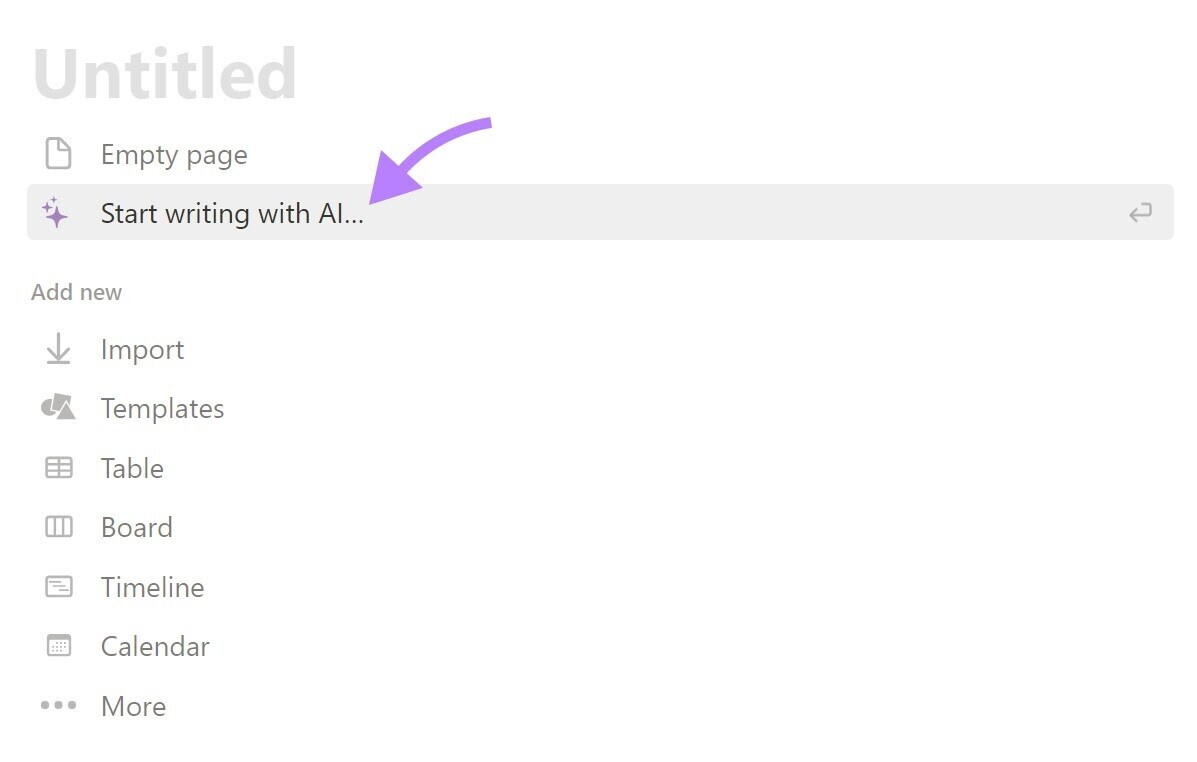
From there, the experience is much like other generative AI tools. Enter your prompt—Notion provides some suggestions, like “Blog post”—and Notion’s AI will generate a first draft.
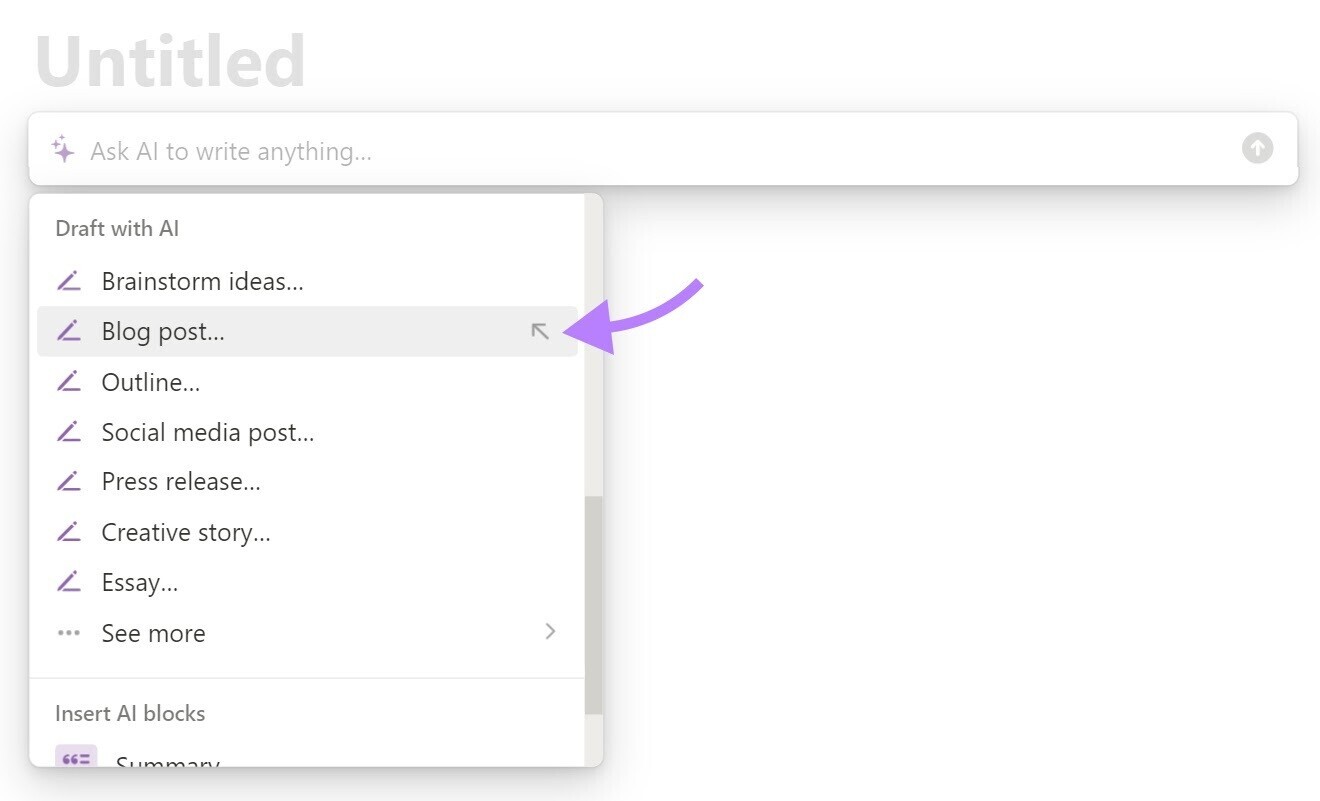
Limitations of GPT-4
GPT-4 Hallucinates
According to OpenAI, GPT-4 is 40% more likely to produce a factual result than GPT-3.5. That said, GPT-4 still regularly invents facts.
For some researchers, the hallucinations in GPT-4 are even more concerning than earlier models, because GPT-4 is capable of hallucinating in a much more convincing way.
One example of this comes from Patrick Hymel, MD, who asked GPT-4 to summarize medical research. Even to an expert like Dr. Hymel, many of the claims made by GPT-4 appeared accurate. With further research, however, Dr. Hymel discovered that they were false.
I repeatedly found that the facts or findings referenced were not present in the cited articles, and in some cases, the articles did not even exist… In many cases, GPT-4 invents references, DOI links, and/or facts and figures without any identifiable link to a real article.
GPT-4 Is Out of Date
GPT-4’s training data ended in September 2021. This means that it cannot give accurate answers to prompts requiring knowledge of current events.
GPT-4, like its predecessors, may still confidently provide an answer. And this hallucination may sound convincing for users that are not aware of this limitation.
GPT-4 Cannot Demonstrate Experience
As a language model, GPT-4 cannot have unique experiences about a topic.
This means that content generated by GPT-4—or any AI model—cannot demonstrate the “experience” part of Experience, Expertise, Authoritativeness, and Trustworthiness (E-E-A-T). E-E-A-T is a core part of Google’s search quality rater guidelines and an important part of any SEO strategy.
The upshot for marketers and SEOs? Don’t completely outsource your content writing to GPT-4.
Generative AI tools can be great assistants. But make sure a human expert is not only reviewing GPT-4-produced content, but also adding their own real-world expertise and reputation.
Frequently Asked Questions About GPT-4
Does Bing Chat Use GPT-4?
Bing Chat uses a version of GPT-4 that has been customized for search queries. At this time, Bing Chat is only available to searchers using Microsoft’s Edge browser.
How Many Words Can GPT-4 Take?
For API users, GPT-4 can process a maximum of 32,000 tokens, which is equivalent to 25,000 words. This includes both the user prompt and answer. For users of ChatGPT Plus, GPT-4 can process a maximum of 4096, which is approximately 3,000 words.
How Much Does GPT-4 Cost?
GPT-4 costs $20 per month for ChatGPT Plus users. For API access to the 8k model, OpenAI charges $0.03 for inputs and $0.06 for outputs per 1K tokens. For API access to the 32k model, OpenAI charges $0.06 for inputs and $0.12 for outputs.
GPT-4 vs. GPT-3.5: What Is the Difference?
The main difference between GPT-4 and GPT-3.5 is that GPT-4 can handle more complex and nuanced prompts. Also, while GPT-3.5 only accepts text prompts, GPT-4 is multimodal and also accepts image prompts.
When Will Chat GPT-4 Be Released for Free?
It’s not clear whether GPT-4 will be released for free directly by OpenAI. However, GPT-4 has been released for free for use within Microsoft’s Bing search engine.
Is ChatGPT Using GPT-4?
ChatGPT uses GPT 3.5, a version of OpenAI’s large language model. For access to the more powerful GPT-4 model, users can either subscribe to ChatGPT Plus or apply to use the GPT-4 API.
Is ChatGPT Plus GPT-4?
ChatGPT Plus offers subscribers the option of choosing between GPT 3.5 and GPT-4, with GPT-4 usage subject to rate limits of 25 requests every three hours.
Can GPT-4 Create Images?
GPT-4 cannot create images. While GPT-4 can interpret images as prompts, it can only provide responses in text. But one of OpenAI’s other products, AI image generator DALL·E 2, can be used to create images from text prompts.
Is GPT-4 Always Correct?
GPT-4 is not always correct. While OpenAI reports that GPT-4 is 40% more likely to offer factual responses than GPT-3.5, it still regularly “hallucinates” facts and gives incorrect answers.
Is There a GPT-4 API?
The GPT-4 API is available to all paying API customers, with models available in 8k and 32k. The API is priced per 1,000 tokens, which is equivalent to 750 words.
Is There a ChatGPT Plus App?
OpenAI has an app for both iOS and Android. The ChatGPT Plus app supports voice recognition via OpenAI’s custom Whisper technology.
What Is a Token for GPT-4?
OpenAI’s pricing model charges per token, not per word. A token for GPT-4 is approximately three quarters of a typical word in English. This means that for every 75 words, you will use the equivalent of 100 tokens.
How Is GPT-4 Used in Marketing?
Marketers use GPT-4 to generate captions, write blog posts, and improve the copy on their websites and landing pages. GPT-4 is also used to research competitors and generate ideas for marketing campaigns.
